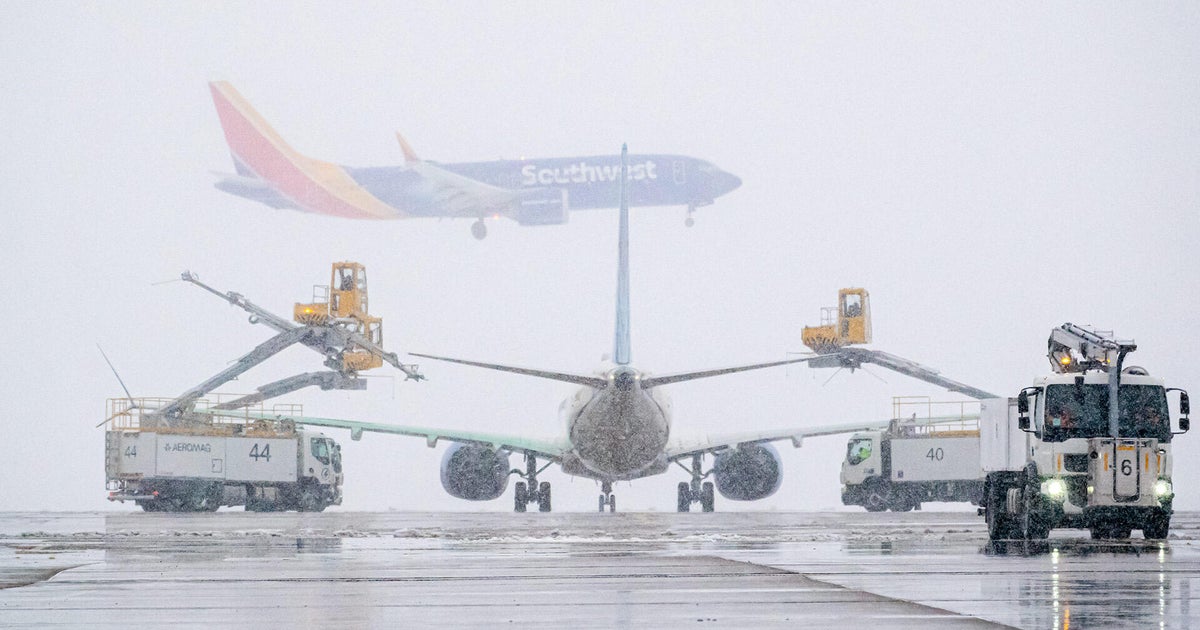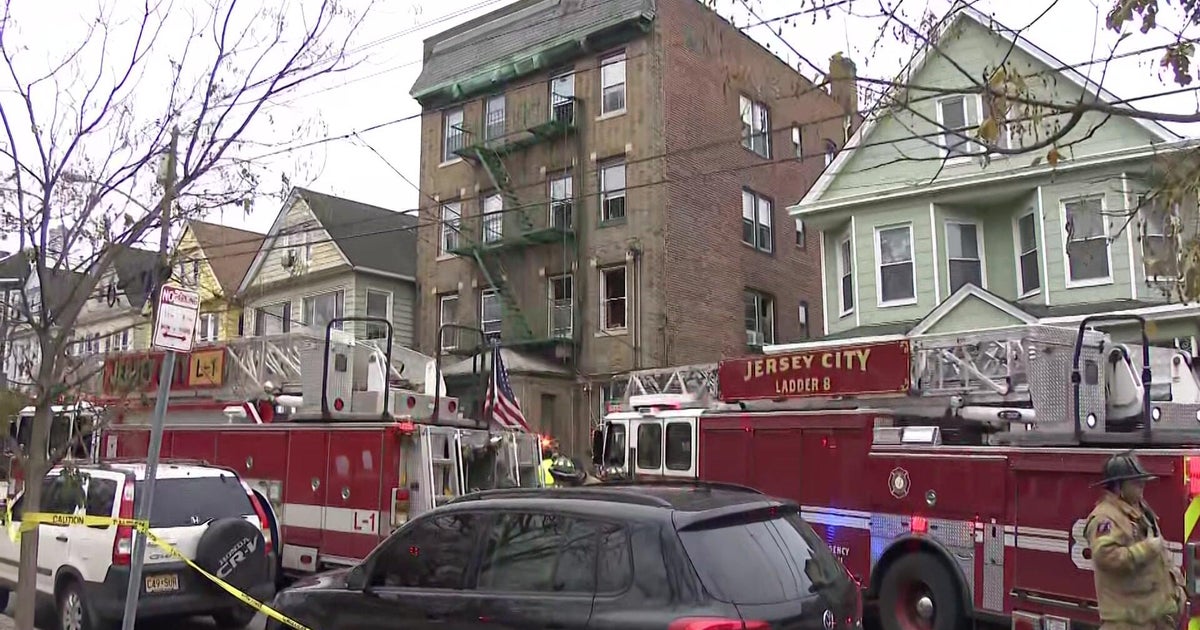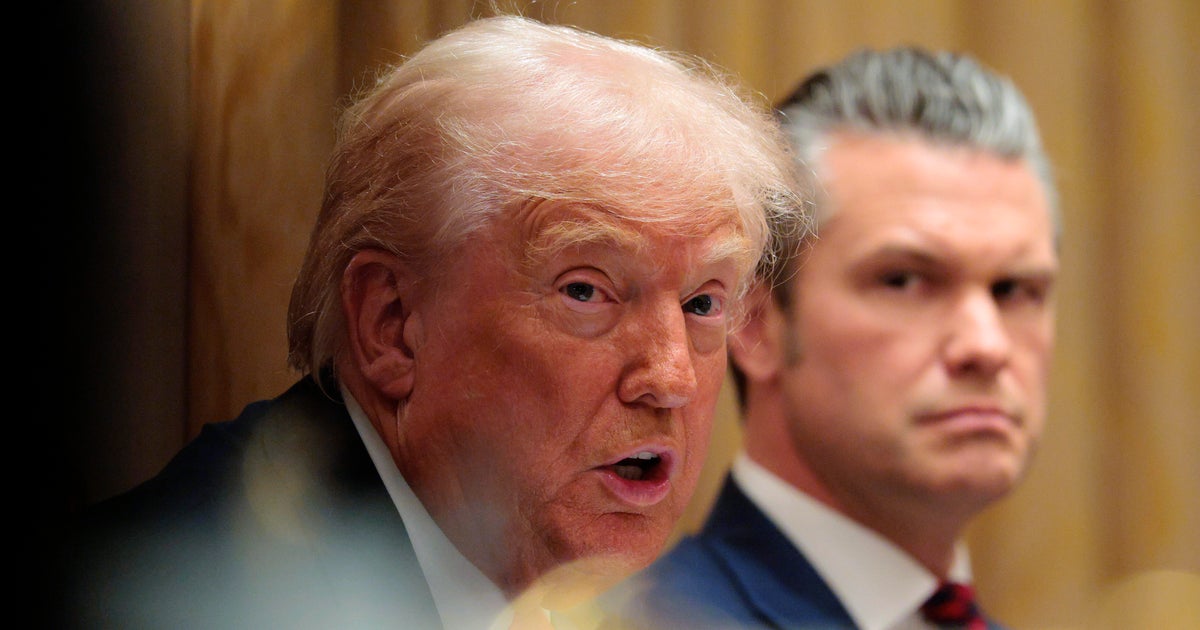The Dust At Ground Zero
This segment was originally broadcast on Sep. 10, 2006. It was updated on Sep. 5, 2007.
On Sept. 11, 2001, thousands of workers rushed into lower Manhattan while everyone else was rushing out. They spent day and night on what became known as the "pile," searching for survivors and, later, remains in the worst of conditions. The cruel irony is that thousands of them are now getting sick. And as Katie Couric first reported last year, a growing number of studies confirm they're getting sick because of all the time they spent breathing the dust at ground zero.
In all there were about 40,000 people who worked on the pile - a collection of firefighters, policemen, construction and utility workers. One of them was 30-year-old New York City Police Det. James Zadroga. When the planes hit the World Trade Center, he drove straight to ground zero and stayed for weeks. His father, Joseph Zadroga, says he remembers that shortly after that his son started getting sick.
"Every morning he would wake up and he said he would be coughing and hacking, and this black stuff would come up out of his lungs," Det. Zadroga's father remembers. "And he just didn't know what was happening to him. He couldn't figure out what was happening to him."
His doctors didn't know either. Before long, James needed to inhale medication to breathe. And when doctors took a scan of his lung, instead of healthy pink tissue, his was black. Then one morning in 2006, James' father woke up to an unusual silence - his son wasn't coughing.
"I went upstairs and soon as I opened the door, I saw him on the floor. I didn't even have to go in there. I knew he was gone," Joseph Zadroga tells Couric. "And we spent the next two hours with him before we called anybody. And then we had them come to take him."
Asked what the autopsy of his son revealed, Zadroga says, "The doctor said, to the best of his knowledge, that Jimmy died from the results of working at the World Trade Center."
The coroner wrote on the autopsy report that the failure of James Zadroga's lungs was directly related to 9/11. It was the first time a death had been officially linked to inhaling the dust created when the towers fell. It was an unprecedented toxic brew - approximately one million tons of pulverized concrete, glass, asbestos, PCB's, lead and more than 400 chemicals. No one had ever dealt with anything like it.
"The air was so thick that everything was stuck in your mouth, in your nose. You were pulling large pieces out, coughing like crazy. You could not but inhale and swallow tons of material," recalls Dr. David Prezant, the Chief Medical Officer for New York City's Fire Department, who was caught in the dust cloud when the first tower fell.
Asked how quickly he noticed that people were showing the effects of breathing in this air, Dr. Prezant says: "What we noticed when we were down there, all right, is that everyone was coughing. Every firefighter, every EMT, was coughing. And then we went back down there the second day and the third day and everybody was still coughing. And by the end of the first week everybody was still coughing."
And it turns out that Prezant is also suffering in a minor way from the aftereffects.
"Well that's the good thing about being down there, from my perspective," he says. "I was able to realize I had this cough and I realized that this is a problem."
What was it about the dust at ground zero that made it so unbelievably toxic?
"The biggest problem was that it was pulverized building materials that wind up having a very high alkalinity - almost like lye, all right, or Drano - that when you inhale it or swallow it, it's burning your entire nose and airway and stomach," he explains.
But most workers thought they would be OK. In part, they say, because of what they heard early on from public officials, including then-New York City Mayor Rudy Giuliani.
"As you get beyond the epicenter of recovery site, the asbestos levels are either safe or nonexistent," the mayor said.
Christine Todd Whitman, the head of the Environmental Protection Agency, said this at the time: "Everything we've tested for, which includes asbestos, lead and VOC (Volatile Organic Compounds), have been below any level of concern for the general public. Obviously for those working down here, these are very important," she said, holding up a respirator mask.
But many workers say they couldn't get respirators at first. And when they did, they were cumbersome and often clogged, making them useless. Within weeks, most of them were feeling minor effects of inhaling the dust. But as the months wore on, some - like one group of first responders 60 Minutes interviewed - began to come down with more severe and unusual symptoms.
"I have chronic lung disease. I have the nodules in my right lung. The pleural lining, which is thickening, the pleurisy, which is a pain in my back that's constant, 24 hours a day, seven days a week," one said.
"I ended up getting a lung infection, nose infection," another said.
And a third says, "My throat still burns every now and then. Basically right now, the biggest part of my problem is breathing."
Initially, many doctors were skeptical that a link could be made to the dust at ground zero. But not Dr. Prezant. He started to investigate. Based on routine breathing tests, he knew the lung capacity of every firefighter in the department before 9/11.
He found that firefighters who worked at ground zero lost a significant amount of lung function - an average of 12 years. While 60 Minutes was visiting, firefighter Garrett Barbosa, who spent two months on the pile, was being tested.
"How has this affected your life?" Couric asks.
"From Superman to Jimmy Olsen. It's a big difference," he replies.
Dr. Prezant's findings were taken seriously, published in the country's top medical journals. "We're never going to be able to get this stuff out of people's body in terms of the dust and the concrete that is down there," Dr. Prezant says.
No one knows that better than firefighter Robert Ryan, a longtime tri-athlete who spent four months on the pile. Two years later, he got the call for a routine fire. Strapping on 100 pounds of equipment, he ran up five flights of stairs.
"We opened the door and we were going in to do a search and collapsed on the floor," he remembers. "At first, I thought maybe my mask had malfunctioned but that's not what happened. I was just laying there, gasping, just gasping for air and it just wouldn't go into my body."
Doctors told him he had lost about 40 percent of his lung function since Sept. 11 - so much that he was forced to give up his lifelong dream of being a fireman.
Ryan says the hardest thing for him was telling his son he was leaving his job. "He just looked at me and said, 'Daddy you're not gonna be a fireman any more?' And I said, 'Daddy will always be a fireman. I just can't - I'm, just can't be in the fire department any more.' So, yeah, that was … somebody stabbed me through the heart."
Ryan is only one of the 750 firefighters who are so ill they can no longer work. And according to department records, five years after Sept. 11, at least 3,000 firefighters - that's 25 percent of the department - still have respiratory problems.
"As a physician, had you ever seen anything like this?" Couric asks Dr. Prezant.
"What you've never seen as a physician is such a large percentage of people all have the same problem, all right? And all have affected their lifestyle so dramatically," he says.
As more and more people have become sick, many workers are questioning if more could have been done to protect them on the pile. At the time, many of them remember being told the air was okay. And they remember being told that by the head of the EPA at the time, Christine Todd Whitman.
On Sept. 18, Whitman said, "I'm glad to reassure the people of New York that their air is safe to breathe."
What led her to make that determination?
"Everything that the scientists were telling us. That the air - ambient air quality in lower Manhattan, this was not about the pile, this was about lower Manhattan - the readings were showing us that there was nothing that gave us any concern about long-term health implications," she says. "That was different from on the pile itself, at ground zero. There, we always said consistently, 'You got to wear protective gear.' "
"Many of the first responders told us all they heard was the air is safe and it gave them a false sense of security. Do you think you emphasized it enough in hindsight?" Couric asks Whitman.
"You know, it's hard to know when people, people hear what they wanna hear. And there's so much going on that maybe they didn't make the distinction," she replies.
But a government investigation found that she spoke too soon when the EPA determined the air was safe because all the test results were not yet in and EPA press releases were changed by the White House Council on Environmental Quality to sound more reassuring. On another front, although the city required respirators and posted signs at the site, safety reports show only half of the workers wore them.
Asked if the EPA bears any responsibility that some of those first responders refused to wear respirators, Whitman says, "No. No, it doesn't. We didn't have the authority to enforce that."
"But with all due respect, your job as the head of the EPA, the Environmental Protection Agency, is to protect people from the environment. Did you really do it?" Couric asks.
"We did everything we could to protect people from that environment and we did it in the best way that we could, which was to communicate with those people who had the responsibility for enforcing what we were telling - saying - should be done. We didn't have the authority to do that enforcement, but we communicated that to the people who did," Whitman says.
Whitman says the city had ultimate authority over the site. "Really, the city was the primary responder," she says.
"Did your people do enough to call the people who were overseeing the site, i.e. Mayor Giuliani and city officials and say, 'Damn it, we've got to protect these people'?" Couric asks.
"Oh, EPA was very firm in what it communicating and it did communicate up and down the line," Whitman says. "No uncertain terms."
In fairness to the City of New York, OSHA, the federal agency in charge of safety in the workplace supplied and encouraged the use of respirators but decided not to enforce their use because of the extraordinary nature of the attacks.
60 Minutes wanted to ask former Mayor Rudy Giuliani about that. He declined to talk to 60 Minutes, but sent this statement: "The people who worked at ground zero are heroes. The government must do everything it can to make certain that they have the support needed to deal with any problems that may have developed as a result of their valiant service to our country."
Couric did talk to one of Giuliani's deputy mayors, Rudy Washington, who was caught in the dust cloud himself on Sept. 11. He says he and the mayor were scrambling to restore order during a time of complete chaos.
"You know, Rudy wasn't huddled in some corner somewhere, waiting on the federal government to come rescue him," Washington says. "We were out there, on the front lines forgin' ahead."
"Could a greater effort have been made to get the people, who were working day in and day out in those horrifying conditions, better protection?" Couric asks.
"Nobody anticipated this level of toxic exposure. We never had this before," Washington says.
And perhaps no one was caught off guard more than Washington, when, after months of working at ground zero, he too got sick.
"Did a doctor, at some point, say to you, 'Hey, you're sick because of what you were exposed to during - Sept. 11?" Couric asks.
"There's no ifs, ands or buts about it," Washington says. "And to make it worse, they said, 'We don't know if you're going to get better.'"
Produced By Kyra Darnton







